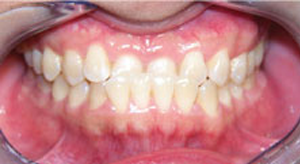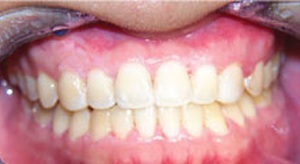Our
Gallery
Reverse Bite Images


When lower front teeth are in front of upper front teeth, the condition is known as a reverse bite or projecting lower teeth. Many people refer to it as an underbite. A small underbite, where the front teeth barely touch, can range in severity from a condition where the teeth don’t even touch due to the gap being so large.
The reverse bite can affect the entire arch, a portion of it, or even a single tooth. The bone in which the teeth are positioned is also impacted by the reverse bite. Failing to diagnose and treat the condition might have very significant effects on the health of other parts of the body as well, in addition to the teeth.


When lower front teeth are in front of upper front teeth, the condition is known as a reverse bite or projecting lower teeth. Many people refer to it as an underbite. A small underbite, where the front teeth barely touch, can range in severity from a condition where the teeth don’t even touch due to the gap being so large.
The reverse bite can affect the entire arch, a portion of it, or even a single tooth. The bone in which the teeth are positioned is also impacted by the reverse bite. Failing to diagnose and treat the condition might have very significant effects on the health of other parts of the body as well, in addition to the teeth.
What Causes Reverse Bites?
A number of factors, in addition to genetic susceptibility, can influence how the reverse bite will manifest. A reverse bite can be caused by:- Swallowing difficulties
- Breathing difficulties
- Improper tongue position
- Prolonged usage of a bottle or pacifier
- Finger sucking
